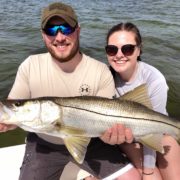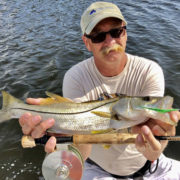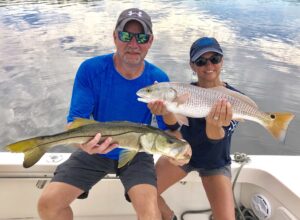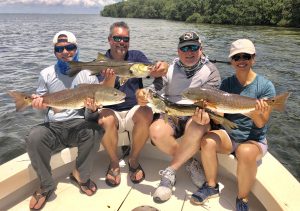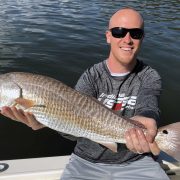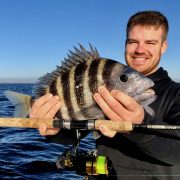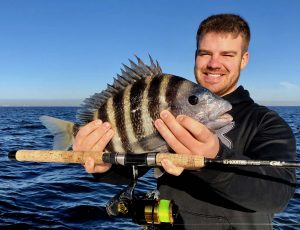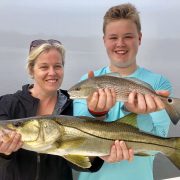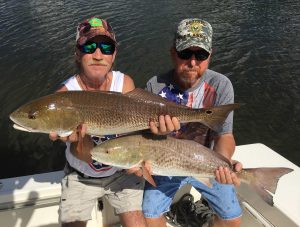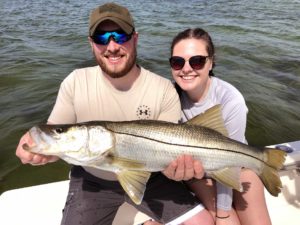
Brennan and Rachel Porter with a nice snook.
With spring just right around the corner, March is shaping up to be an excellent time to fish.
Baitfish will be arriving on the grass flats by mid-month. Along with this influx of baitfish, snook, redfish and sea trout will be moving out of the back country and their deep winter haunts to feed until winter rolls around again.
Usually, March ushers in the harvest of snook, but due the moratorium on snook, redfish and sea trout, there’s little you can take home to eat. However, the catch and release fishing will the outstanding.
Let’s say, you couldn’t care less about releasing fish, and you gotta eat!
Sheepshead are still spawning and are relatively easy to catch if you’re fishing for them in the all the right places. I’m finding sheepshead in deep sandy holes on the grass flats, around oyster beds, bridge pilings, and artificial reefs. Baits of choice for these bandits, are shrimp, fiddler crabs, and believe it or not, small pieces of barnacle.
Mangrove snappers have been biting well all winter long and will just become more active as the water warms. When fishing for sheepshead around bridge pilings and artificial reefs, we start catching snapper also. Snapper love to feed on shrimp, crabs and scaled sardines.
When fishing for both species, I use a 1/0 hook and as little weight as necessary to suspend the bait into the strike zone. I always start a chum slick to get the action going. I like to anchor up tide and let particles of ground up baitfish draw whatever quarry I’m after, right to the boat.
Lastly, on table fare: By mid to late March, I’ll be running a short distance offshore to catch king mackerel. Their spring migration usually kicks off around St. Patrick’s Day and last four to six weeks, depending how along the water temperature stays in their comfort range. Along with the king mackerel, there will be schools of Spanish mackerel mix in.
Some people want to keep fish, and I get it! Fortunately, most of my clients just enjoy catching fish. Otherwise with all the closures, I’d be living in a van, down by the river.
My clients are catching plenty of snook right now. Alongside the snook, some of the largest trout most people have ever caught in their life are being released. I haven’t been targeting redfish much lately, but I will be this month as large schools begin to invade the grass flats.
The fly fishing is extremely good right now for snook and sea trout. If you’re not a purist and are willing to cast a fly once I have the fish chummed up with live bait, you won’t be disappointed. It’s as easy as matching the hatch. A cave man can do it!
Stay fishy my friends.
Pictured: Longtime client Brennan Porter and his now fiancee, Rachel. Brennan proposed later that day!
Usually, I get too busy to write fishing reports as often as I’d like, so, if you’re interested in seeing my most recent post, please like my, Facebook Page to receive updates. For charter reservations call/text Wade at 813-286-3474.
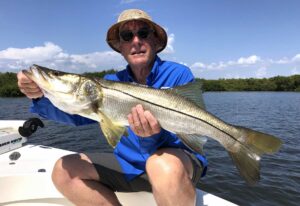 Thankfully, the beaches have been reopened, and the economy is slowly starting to rebound. First and foremost, today is a time to remember all the service men and women who fought and gave their lives to keep this great country free.
Thankfully, the beaches have been reopened, and the economy is slowly starting to rebound. First and foremost, today is a time to remember all the service men and women who fought and gave their lives to keep this great country free.


